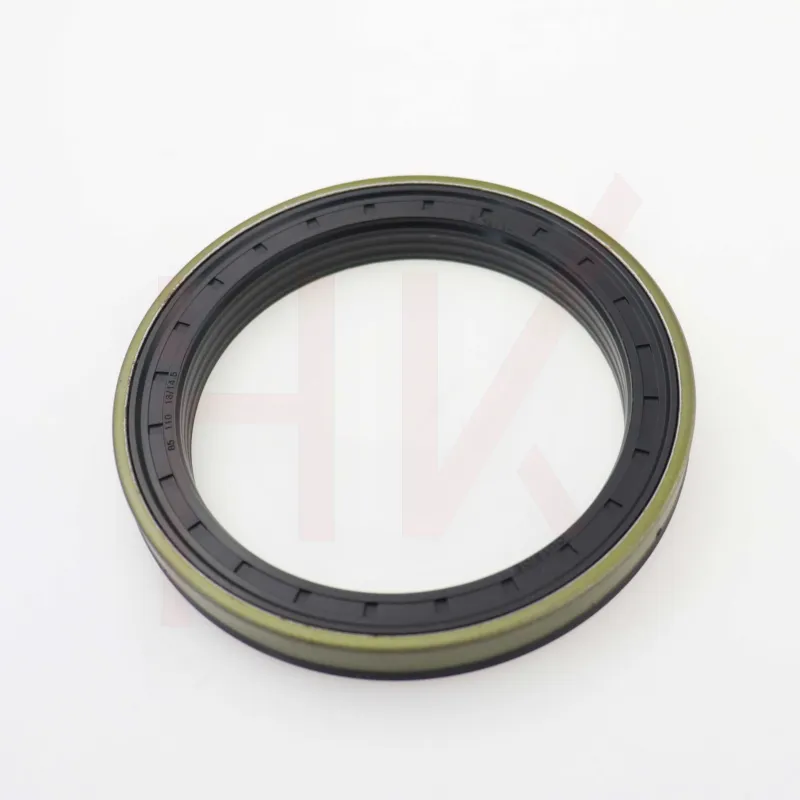ඔක්. . 15, 2024 17:58 Back to list
Comparing Dust Seals and Oil Seals for Optimal Performance in Machinery
Dust Seal vs. Oil Seal Understanding Their Differences and Applications
In the realm of mechanical engineering and machinery maintenance, the terms dust seal and oil seal are commonly encountered, often leading to confusion among professionals. Both seals play critical roles in protecting machinery, but they serve different purposes and are designed to combat distinct types of contaminants. In this article, we will explore the differences between dust seals and oil seals, their specific applications, and their significance in various industries.
What is a Dust Seal?
A dust seal is primarily designed to prevent the ingress of dust, dirt, and other particulate matter into a mechanical system. Typically made of rubber, polyurethane, or other resilient materials, dust seals create a physical barrier that keeps contaminants at bay. They are commonly used in environments where dust exposure is substantial, such as construction sites, agricultural machinery, and off-road vehicles.
The design of a dust seal may incorporate features that enhance its effectiveness, such as a lip or flange that ensures a snug fit against the housing of the machinery. While dust seals are excellent at keeping solid contaminants out, they are not designed to retain liquids. Therefore, they are often used in conjunction with other sealing components, particularly oil seals, to provide comprehensive protection for mechanical systems.
What is an Oil Seal?
An oil seal, on the other hand, is specifically designed to contain lubricants within a machinery system, preventing oil leakage while also keeping foreign contaminants out. Oil seals are typically constructed from rubber or similar elastomers and feature a sealing lip that exerts pressure against the shaft or housing, allowing them to form a tight seal against oil and grease.
Oil seals are critical in various applications that involve rotating shafts, such as automotive engines, gearboxes, and hydraulic systems. Their primary function is to maintain the integrity of lubricants, ensuring optimal performance and longevity of machinery while preventing contamination from external elements.
dust seal vs oil seal

Key Differences Between Dust Seals and Oil Seals
1. Functionality The main difference lies in their functionality. Dust seals protect against solid particles, while oil seals prevent liquid leakage of lubricants.
2. Design Dust seals have a simpler design focused on keeping out dirt and debris, whereas oil seals are engineered to create a dynamic seal that accommodates rotary motion while containing oil.
3. Material Although both types of seals are typically made of elastomers, the material properties and design may vary depending on their intended application. For instance, oil seals may require specific chemical resistance to handle different types of oils.
4. Applications Dust seals are often found in applications where exposure to particulate matter is high, while oil seals are ubiquitous in systems where lubrication is essential, such as motors, machinery, and vehicles.
Conclusion
In summary, while both dust seals and oil seals are essential components in mechanical systems, they are designed for different purposes. Understanding the intricacies of these seals is crucial for maintenance professionals tasked with ensuring optimal equipment performance and longevity. By selecting the appropriate type of seal for specific environmental conditions and operational requirements, one can enhance the durability and efficiency of machinery.
As industries continue to evolve and technologies advance, the importance of effective sealing solutions remains paramount. Whether it's protecting machinery from harmful dust or preventing costly oil leaks, dust seals and oil seals play indispensable roles in maintaining the functionality of mechanical systems across various sectors. Proper selection, installation, and maintenance of these seals are vital in achieving reliable performance and minimizing downtime.
-
The Trans-formative Journey of Wheel Hub Oil Seals
NewsJun.06,2025
-
Graphene-Enhanced Oil Seals: Revolutionizing High-Pressure Oil Sealing
NewsJun.06,2025
-
Future of Hydraulic Sealing: Advanced Intelligent TCN Oil Seals
NewsJun.06,2025
-
Don’t Let a Broken TCV Oil Seal Ruin Your Day
NewsJun.06,2025
-
Bio-Inspired Dust Seals for Better Sealing Performance
NewsJun.06,2025
-
Biodegradable and Sustainable Hydraulic Seal Materials
NewsJun.06,2025
-
Top Oil Seal Solutions for Your Industrial Needs
NewsMay.22,2025
Products categories
















